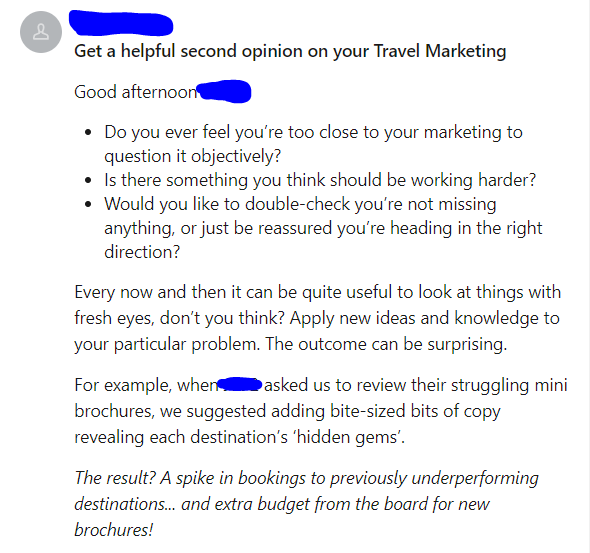
Modern technology and intelligent social targeting have meant marketing professionals now have their work cut out for them when looking to reach both existing customers as well as prospective consumers, as consumer behaviors have evolved to demand a more personal and individualized experience with brands.
With more opportunities than ever before to influence consumers as they move down the purchase funnel, it is now crucial for companies to change their approach in communicating with prospective as well as returning consumers. Understanding who your buyer personas are is not a new concept for businesses, but rather has always been at the foundation of every successful campaign. However, the drastic change in consumer behavior in recent years, coupled with the new ability to obtain even more detailed insights, means that marketers now have to actively look to develop their strategies in order to keep their products or services relevant to their audiences.
To this end, we explore the differences between segmentation and personalization and the role audience buckets can play in executing successful campaigns, ensuring businesses don’t get left behind.
Segmentation

Segmentation is the process of grouping together consumers who share similar traits, to target them directly with highly relevant content. In today’s very busy and rather noisy consumer-focused world, companies struggle to identify who and more importantly – where their target audiences are. Audience segmentation looks to assist companies by segmenting consumers into the following categories, among others:
- Age, gender, occupation, ethnicity, etc.
- Where they are in the sales journey; unaware of the brand, showing initial interest, have abandoned a cart, has previously purchased, etc.
- Creating personas – based on the above information being obtained, more detailed personas are then created to help the business understand and depict their potential audiences
Segmentation helps businesses look at their audience in more granular detail in an attempt to understand and even empathize with them. Segmenting consumers into different groups, based on common attributes, helps businesses address their wants and needs whilst trying to be as relevant as possible to them.
Personalization

Personalization is more the strategy that happens after segmentation to complement the relevant grouping by communicating to small groups, using more detailed and dynamic messages. It aims to communicate to an individual, tailoring a message that specifically addresses, or seemingly addresses someone as an individual. In order to have a detailed understanding of an individual to speak to them as one person, businesses need to have gathered enough sufficient and accurate data about their profile, to tap into their interests. In the past, many businesses have simply addressed consumers by their name but failed to tailor the message or offer to interest the person further.
Personalization no longer consists of the ‘lazy’ approach of adding a person’s first name on a blanket message, sent to a large database, in a bid to gain some albeit very small traction.
In the example below, this message sent to this person’s connections on LinkedIn, offering to help with aspects of travel marketing, was sent to people who weren’t travel-business owners and don’t have any connections to the travel industry. The message is impersonal and vague and frankly, doesn’t leave a great impression!

With the use of data-collecting technology that is now widely available, businesses can understand far more about the individuals they are trying to reach, creating personalized messages that appeal directly to the person receiving them. Meaning there is far less need to be sending blanket messages to a weak database of contacts, with a very low response rate.
The most successful marketers will not only be aware of the differences between segmentation and personalization but also how they can work together to compliment a campaign. This leads us to what to do once you have established your segments…
What Are Audience Buckets?
Audience buckets is a term used in marketing to group together people who share the same or similar demographics, behavior or interest. Creating audience buckets will ensure a campaign focuses on specific needs and interests from smaller groups of consumers. By grouping them based on similar traits, you can target them with highly relevant and engaging content that aims to steer them into some kind of buying journey. The more detailed these buckets are, the more likely your brand is to see success from the campaign, as audiences respond best to targeted and relevant messaging when they see it on platforms they know and trust.
Understanding your audiences will help to reach out to them on their most favored platforms online, in the hope of nurturing them into a journey that looks to eventually convert them. By reaching them on relevant platforms, your content will also have a far greater impact on them, significantly increasing the potential of converting.
Obtaining the right information needed to bucket your audience into relevant categories has now been made easier, with a wide range of personalized marketing tools and methods available to help businesses find new customers, as well as creative ways to nurture prospective and returning customers – there’s an approach to fit every business.
The Personalized Marketing Approach
The personalized marketing approach is all about being as relevant as possible, as your content is far more likely to resonate with audiences you have profiled through segmentation. Then, grouping them in audience buckets, your personalization strategy can really start to take shape, targeting these groups on the platforms they are frequenting. Having detailed data will help establish well-informed audience personas to help understand who you are addressing. And with so many ways to obtain data from consumers, there is no excuse for not utilizing this level of detail to your advantage. From email surveys, banner ads and retargeting using cookies, there is a host of different approaches to gaining customer data.
A water-tight personalized marketing campaign will be comprised of segmentation, audience buckets and insights gained from a reputable marketing tool. By showing your brand understands the audiences’ needs and tailoring content to address them, it should grab their attention just long enough to entice them in, or at least begin to engage with your business.
There is, of course, a balance between attention-grabbing and showing a ‘creepy’ level of personalization, as consumers are quickly turned off from brands who approach them at the wrong time, with the wrong messages, appear to know too much without asking, or simply with an offer that isn’t appropriate. With smartphone technology using location tracking, some consumers are finding campaigns are too personalized with Google’s own review platform sending push notifications when people walk past places of interest – even if the person hasn’t visited the venue! If your business is considering a more granular personalization campaign, make sure to be transparent about the information you are obtaining, giving consumers the option to opt-in or out.
There is an increasing need for businesses to improve their personalization efforts, with consumers demanding a more personal experience when they interact with brands. Gathering demographic information such as age, gender, family, location and even ethnicity has been made it much easier for marketers, with tools such as Google Analytics offering these segmentation groups in web traffic reports. Having easy access to this type of information can help create solid foundations to successfully reach and appeal to potential consumers.




